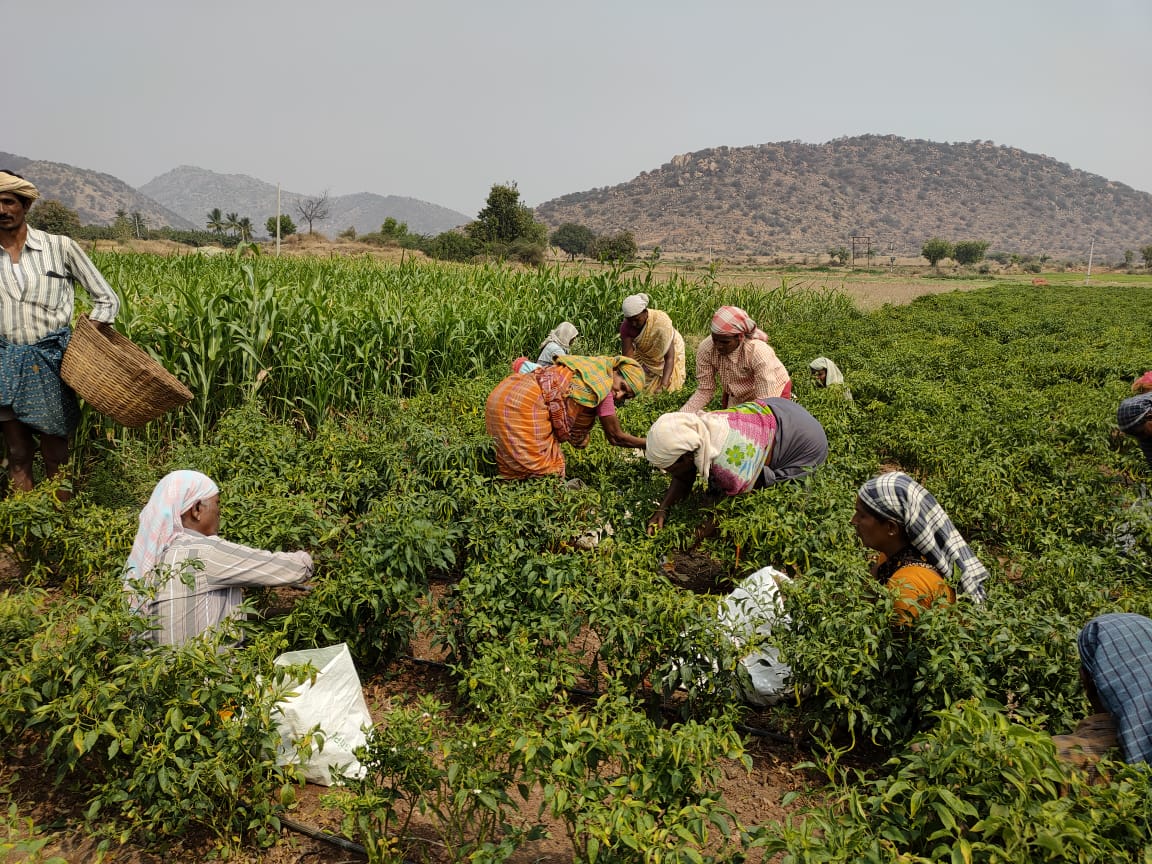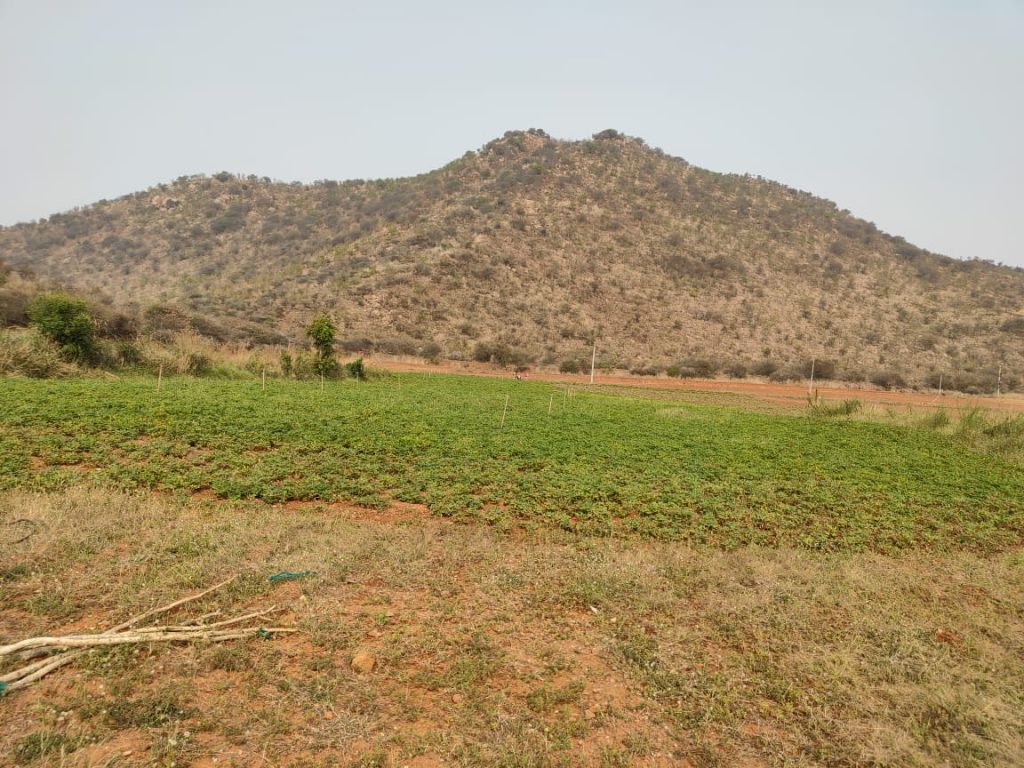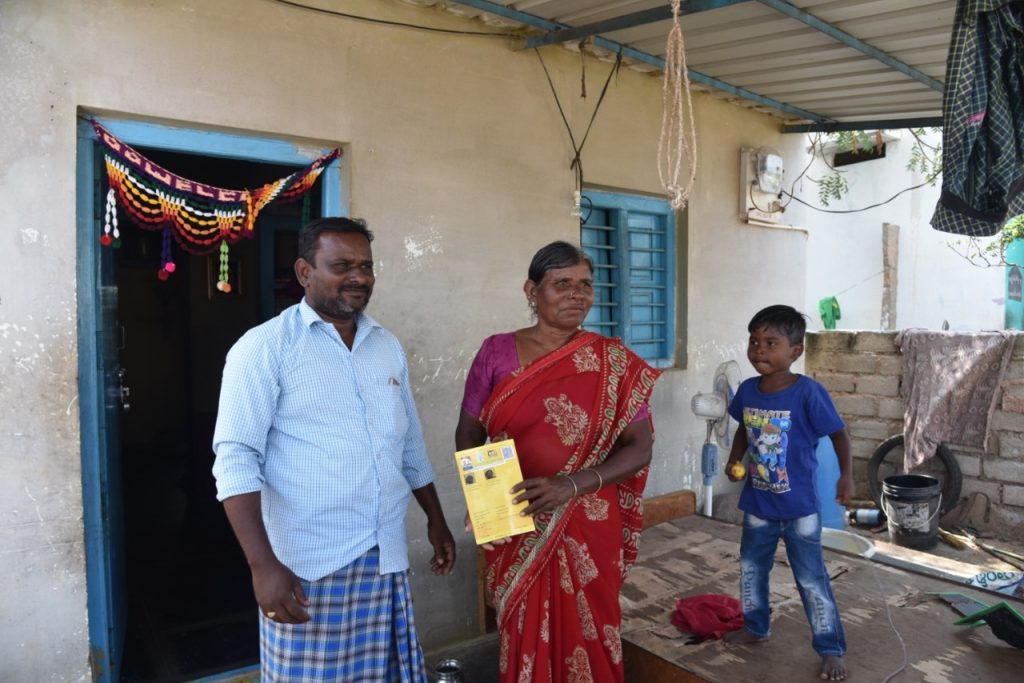
MGNREGA helps Andhra village end droughts, bring migrants home

Villages may not need hundreds and thousands of crores of investment to be self-reliant. Infusion of a small corpus of money into projects that interest people can create wonders, proves the tale of transformation of Bandlapalli village in Andhra Pradesh.
From being a perennially drought-prone area, Bandlapalli has progressed into a prosperous, self-sustaining village that has found new sources of employment, brought migrants home and banished droughts, thanks to a small investment of ₹9.33 crore under the Mahatma Gandhi National Rural Employment Guarantee Act (MGNREGA) done over 15 years.
Described as the world’s largest rural employment programme, MGNREGA was launched by then Prime Minister Manmohan Singh from this remote village in Narpala block of Anantapur district in Andhra Pradesh, on February 2, 2006.
The Federal recently visited the village to map the progress of the employment programme a decade-and-half after its launch.
Men and women of the village wake up at the crack of dawn and armed with lunch cans leave their homes to board auto-rickshaws waiting at the MGNREGA centre. They are dropped at the fields where they work till 2 pm. Those who stay back take care of domestic chores.
Velpula Narayana Reddy, however, recalls that this was not the scene 15 years ago when families were forced to move to far off cities in search of work due to the frequent droughts in the area.
Related news: Budget allocates ₹73,000 crore to MGNREGA scheme
“The families would lock their houses and leave with luggage on their heads and little kids on shoulders to faraway places like Bangalore, Hyderabad, Vijayawada or to Anantapur (district headquarters), not knowing whether and when they would return,” he says.
Even though every family owned a piece of land, they couldn’t utilize it as there wasn’t enough water for cultivation. Only a handful of well-off farmers were able to pursue banana cultivation. Almost every farmer has had an unsuccessful attempt to dig bore wells. Half-a-dozen families left the village, unable to repay the huge sums of money borrowed from private financiers for such unsuccessful experiments, Reddy says.
Small start to a mammoth change
Reddy was the village sarpanch when the MNREGA programme was launched in 2006. He had shared the stage with Manmohan Singh and UPA chairperson Sonia Gandhi.
“There was the joy that work would be created in the village itself under the scheme. But, people still had doubts if that was possible because nothing had worked so far,” he recollects.
Soon after the programme’s launch, the then district collector Anuradha visited the village and appointed district water development agency (DWMA) officer Chalapathi Rao for its implementation. Rao with Reddy’s help sensitised the ward members to motivate people to enroll themselves into the programme named ‘Karuvu Pani’ (drought work).
Every villager was assured that, if enrolled, they would be provided work and the wages would be credited to their post office accounts on a weekly basis. The work would be measured for calculating the wage every day.
“Initially, the work involved digging and filling pits and clearing bushes. But, we were doing it because it fetched us between ₹300 and ₹400 a week, based on the measurement of our work assessed by the mate (leader) and the field assistant,” remembers Adilakshamamma, a woman from the backward community.
Getting water to the village, bringing migrants home
As months passed by, the work was extended to water and soil conservation as well as construction of pukka roads and tree plantation. People employed under the scheme were also assigned to work on trenches, pits and farm ponds.
This began to address the actual problem of the village: lack of water resource. The rain water which used to flow down to villages in the downstream, started getting reserved in newly-dug ponds, while also recharging underground aquifers. By 2009, farmers one after the other, began to plough and sow seeds for horticulture crops including chillies and vegetables.
Today, Bandlapalli maintains the groundwater level at 12.6 meters, as per the official records. Sinking a bore well is no great risk now. Water is available below 300 meters.
The revival has encouraged several residents who had deserted the village to return home.
“I learned from the people here that farm ponds were taken up under drought work. I visited the village a few times and assessed the situation before moving my family back to the village,” says Narottam Reddy, who owns 2.5 acres of land in the village.
The change in the village’s fortunes helped Narottam clear his debts and send his son to Hyderabad after BTech. His son is among the 30 engineering graduates produced by Bandlapalli after its transformation.
Narottam’s family still makes use of the 100 days of work under MGNREGA besides cultivating chillies and groundnut in their own farm during the crop season. “MGNREGA fetches us an assured income of ₹21,000 to ₹22,000 a year. I go for drought work when there is no work in my farm,” he says.
Bhaskar Reddy, 38, is among the recent lot of nearly 50 people who returned to the village from different places, convinced that life here was better than or equal to living elsewhere. “I was working as an electrician for over 20 years in Anantapur. But there has been no work for the past many days. I returned to the village last month,” he says.
The men are in the process of completing formalities like changing the Aadhaar card address and getting the ration cards transferred. Once they get the job cards, they will be added to the existing 777 card-holding families.
Between 2003 and 2005, several farmers made unsuccessful attempts at digging bore wells, spending around ₹60,000 and more. Because the village is on an elevated plain, even a small quantity of rainwater used to flow down to the B Pappur tank that caters to the irrigation needs of neighbouring villages. There was no overground water storage facility either.
A few farmers left the village overnight, unable to repay the money borrowed from private lenders at three per cent interest. Many were reportedly working as daily wagers in agricultural and construction sites.
“But, we all came back to the village after we learned about the change,” said Gummadisani Venkata Siva Reddy, 45, who was neck deep in debt after five failed attempts of digging a bore well.
Today, distress migration has become a thing of the past. Families that have returned to the village now cultivate chilies, vegetables, bananas and other horticulture crops. A handful of farmers have also been successful in floriculture while only a few farmers have tried their hand at paddy, a water-intensive crop.

“We made a storage tank not only for our 18 acres but also to help the farmers around,” said Venkata Krupakara Reddy, who spared about 10 acres for the tank at the foothills.
Bandlapalli, which was known for its exceptional high school education till 2005, now has 30 engineering graduates, five teachers and a few youths working in software companies in Hyderabad or Bangalore. One of the youths is preparing to go abroad for higher education. Unlike 15 years ago, today not a single child of the village is out of school.
Adilakshmamma, a Dalit woman who has been working as a field labourer for the past two decades says, “The credit for the change in our lives invariably goes to the drought work (MGNREGA). If you ask me how our village would have been in absence of this scheme, I should say most of the houses would have remained locked and we would go to work at faraway places”.
Related news: Chhattisgarh No.1 in providing employment under MGNREGA
Differently-abled persons were also provided work under the scheme like fencing trees planted in the village and watering saplings.
Competitive wages in private, more jobs
The moment MGNREGA gained the confidence of people, farmers around the village began to face shortage of labour force as workers demanded a hike in wages or that on par with government wages.
Several villagers remember working for ₹30 to ₹ 35 in case of men and ₹20 per day in case of women till 2006 as farm help. Also, they had to walk from home to the farm because transportation was their own responsibility.
“When we began to get drought work for a minimum of ₹300 a week, our bargaining power increased. We rejected offers for less than ₹50 a day. The farmers tried getting workers from other villages but the response was the same. Finally, wage revision became a necessity for the farmers to get work going,” said Pittu Venkata Narayanamma, the current village sarpanch. Thereafter, it became the farmer’s responsibility to arrange transportation like auto-rickshaw or trucks for the hired farm hands.
Now, the wages in private are more than MGNREGA, thanks to the competition. The maximum wage under MGNREGA is ₹242 per day, while individual farmers pay up to ₹400 to men and ₹300 to women. The farm work is, of course, seasonal.
Around 30 youths in the village own auto-rickshaws and eke out a livelihood by transporting the labourers to the fields in the morning and back to village in the afternoon.
“My son bought an auto from the earnings from the drought work,” says Sivamma, who works in the chili fields along with other women from the village.
Venkata Ratnamma, who also leads the Vivekananda thrift group (for women) in the village, said her son became an entrepreneur after completing his degree, by starting a pesticides shop.
Cost of transformation
The visible transformation of Bandlapalli village became possible at an investment of ₹9.33 crore in 15 years. According to District Water Management Agency (DWMA) project director N Venugopal Reddy, of the ₹9,33,42,000 spent, ₹7,92,08,000 was wage component while the rest was meant for material.
A total of 5,17,275 person days (man days) were created. Of the 2,560 people enrolled from 777 families, 2,128 had exhausted their 100 days of work by the third week of March and the village always utilised its entitlement.
MGNREGA mandates that at least 60 per cent of the works undertaken should be related to land and water conservation. Creation of structures to conserve water, farm ponds and irrigation channels are among the initiatives allowed. Close to 900 water harvesting structures have been created in and around the village.
The administration encouraged the farmers to grow horticultural crops using labour under MGNREGA. It provided 10 million plants to farmers since the inception of the scheme.
The village has also been able to set up five dairies even though struggled with fodder and water scarcity for cattle before the launch of MGNREGA.
MGNREGA changed our lives: First job cards recipients
Akuleti Gangamma, a dalit woman in her mid-50s, who has been a farm hand since her teenage days, was the first recipient of the job card from then Prime Minister Manmohan Singh in 2006. While Gangamma had been getting ₹20 a day from working in fields in nearby villages, she says the bargain power of farm labourers like her increased after they were given the MGNREGA job card.
“We were going to work provided by the government, and the farmers also needed our services during the same period. They increased our daily wage to ₹50 for women and ₹70 for men. Life began to change thereafter,” says Gangamma who works for more than 340 days a year under MGNREGA and in fields.
She has built a house with financial support from the government and her savings and has bought 20 grams of gold for a rainy day. She now gets a pension of ₹2,250 a month as a single woman. For 100 days of MGNREGA work, she gets around ₹22,000. She works in the fields for another 200 to 240 days in the private fields.
What Gangamma prays for now is a pension, when she cannot work. “I am becoming old and the energy levels are coming down. If there is pension for those who are unable to work after some time, it will be great help,” she says.
Cheemala Peddakka, one of the first five recipients of the card, recounts a similar story of change. “I used to go to the fields as far as five and six km from my village early in the morning. I along with fellow workers would return home only after the sunset, with a pay of ₹20. Thinking of educating children and their future plans was beyond my mind,” she says.

Working under the scheme has helped Peddakka educate her sons and the family now cultivates sweet lime, groundnut and Bengal gram on their two-acre land when not working under the scheme.
Interestingly, until their exposure to MGNREGA, Gangamma and Peddakka and every woman in the village did not know why women were discriminated against men for wages. “Double or at least 50 per cent more wage to men was a common practice. We never questioned since it was an accepted practice,” Gangamma says.
The villagers have been requesting the government to increase the number of work days to 150 a year, so that they would have work throughout the year.
People raring for more
Having enjoyed the fruits of partial development, the people of the village have now urged the government to sanction a lift irrigation scheme to ensure perennial availability of water for their fields.
Two canals pass through either sides of the village that is surrounded by hills. “If there is a lift irrigation scheme to channel the water from one of the canals, the village will permanently be free from drought,” the farmers said.
The farmers are united in their demand and have offered to share the expenditure with the government.
Related news: Rural unemployment rate shows a sharp rise due to fewer MGNREGA jobs
People have been making representations to the authorities for diversion of Handri Neeva Sujala Sravanthi canal flowing three-four km away. Official sources said the possibility is bleak as the canal is at a lower elevation and the cost implications would be high for lifting.
Digging trenches along the contours of the hill range that overlooks Bandlapalli and holds a reserve forest is another alternative proposed by village youth. If the Union environment ministry permits, this scheme may be cost effective and help in storing water for long besides effectively recharging the groundwater.
The village has about 2,800 acres of arable land. Currently, the land cultivated is around 2,000 acres, the rest being partially put under cultivation.


